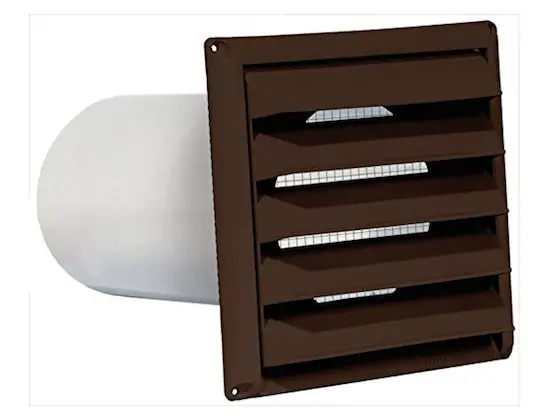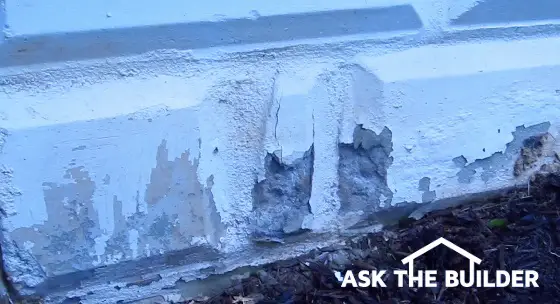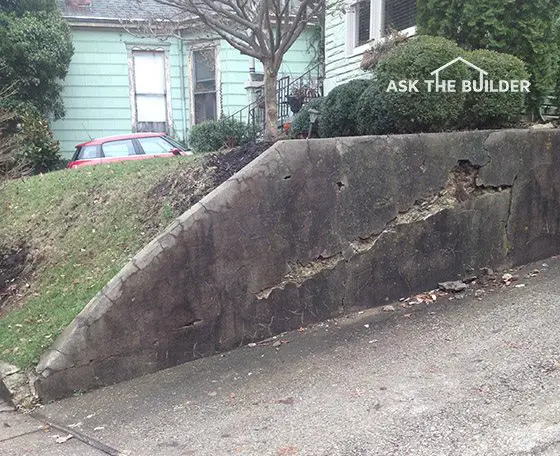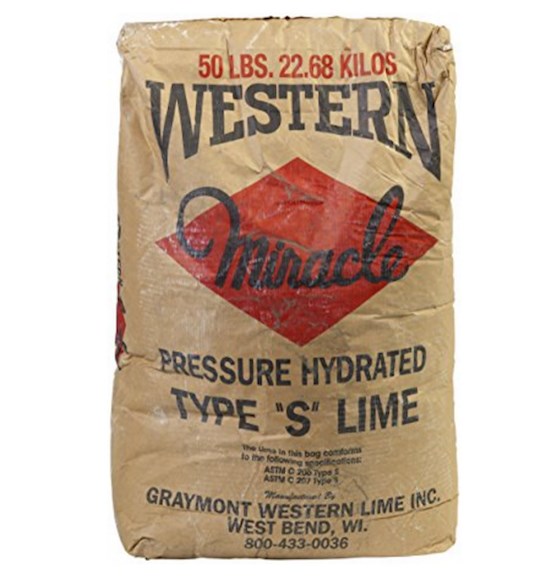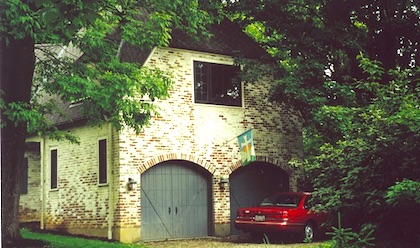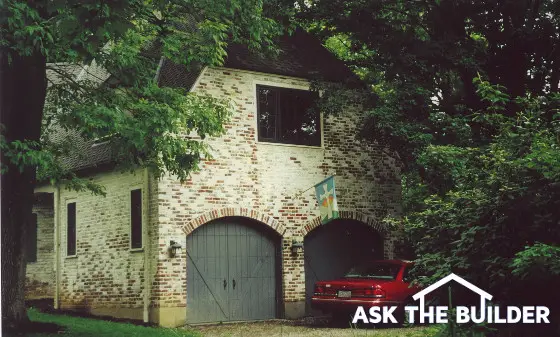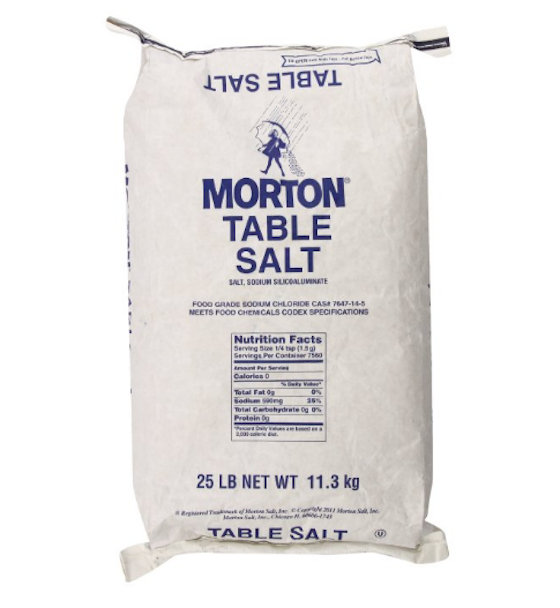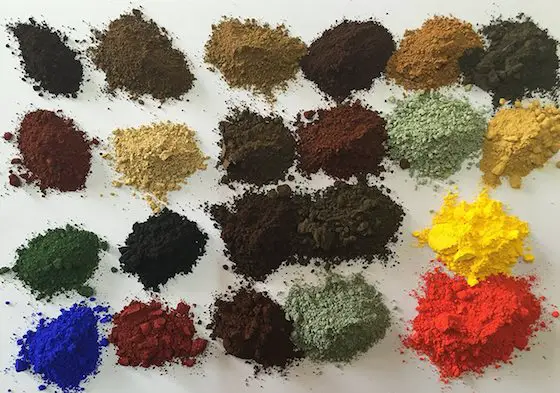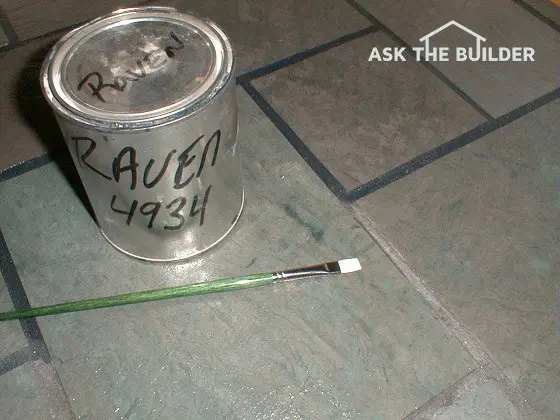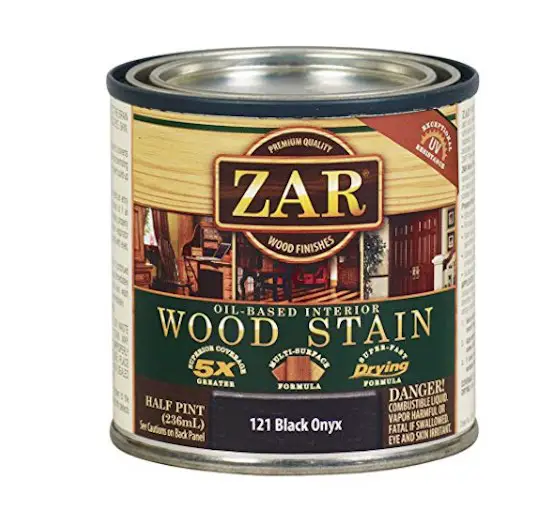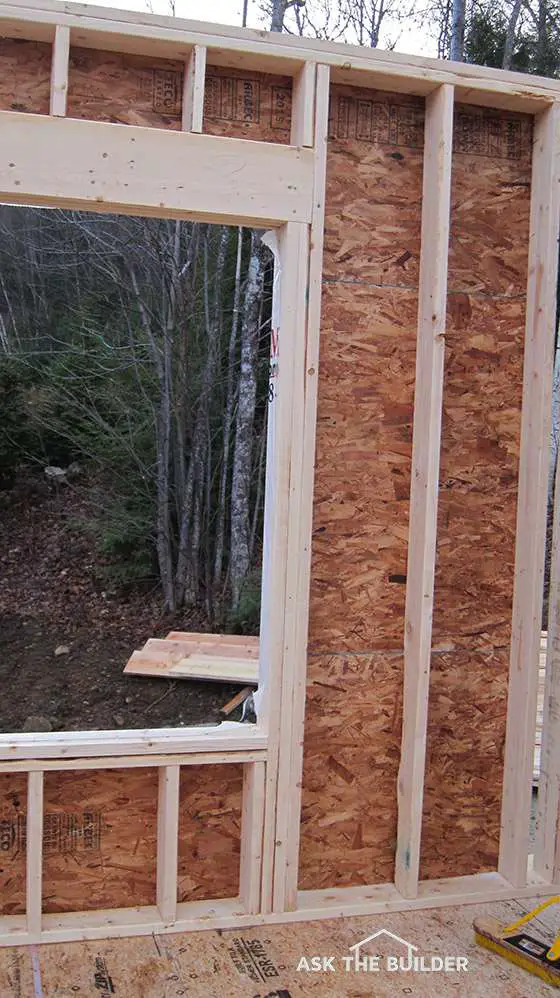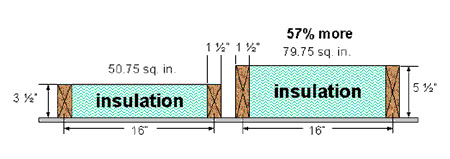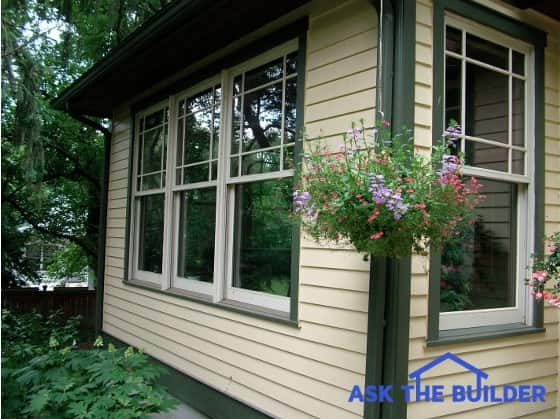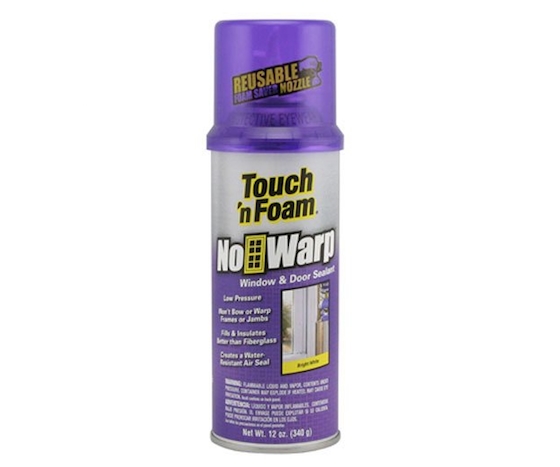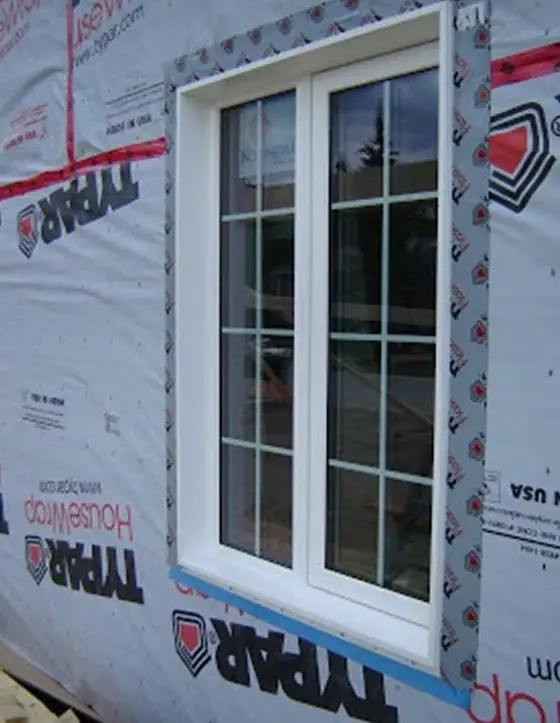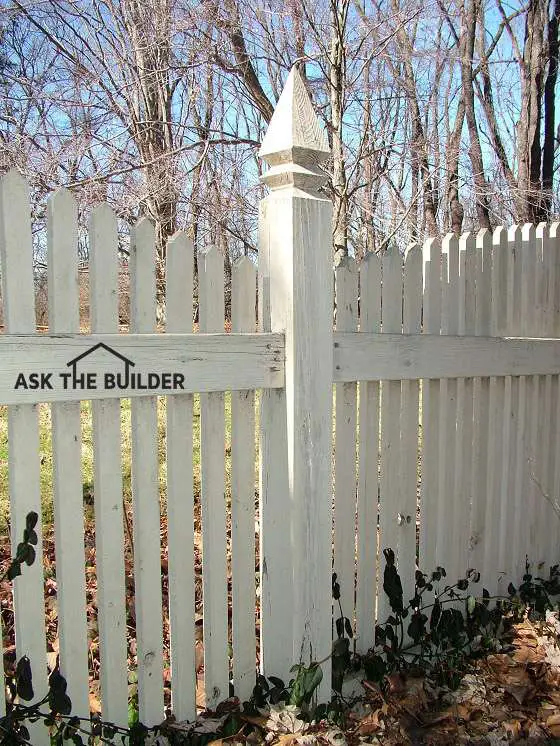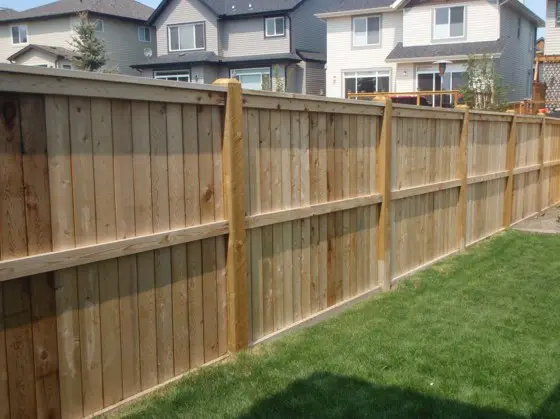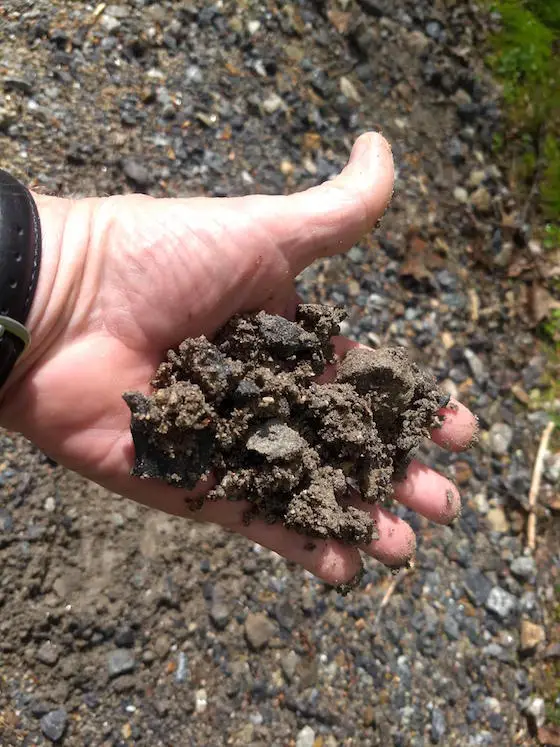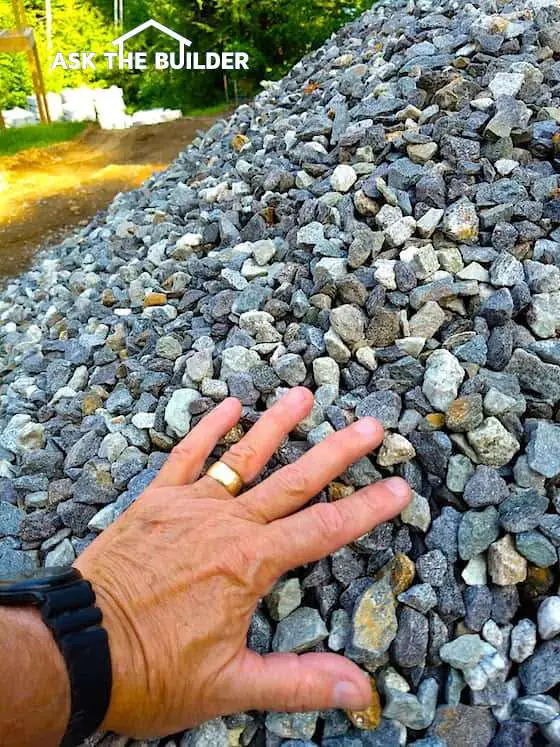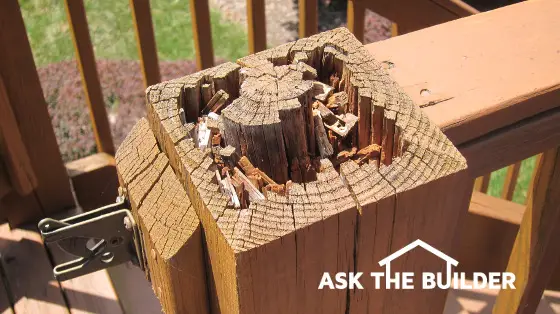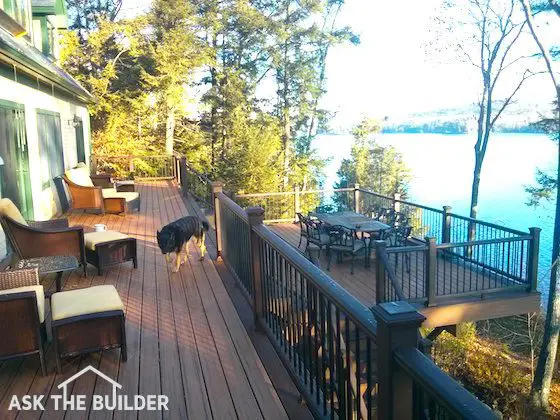
This is part of my outdoor deck complex. It's covered with amazing Trex Transcend decking. The long narrow deck to the left was originally covered with generation one Trex. The lower deck to the right was new the summer of 2016. I know, from years of experience, I need to wash my deck periodically with Stain Solver oxygen bleach to keep it looking like new. CLICK THIS PHOTO to ORDER STAIN SOLVER NOW. - © 2017 Tim Carter
Black Spots on Trex Decking TIPS
- NO composite deck is maintenance-free
- Spots are mildew or mold and harmless to decking
- Clean with Stain Solver organic oxygen bleach
- Prevent spots with simple solution
- CLICK HERE to Get Tim's FREE & FUNNY Newsletter!
DEAR TIM: I have 1500 sq. ft. of lakefront boardwalk consisting of TREX Accents decking. There are no trees nearby. It started developing black spots within two years after installation in 2014.
Coincidentally that is the same year that TREX settled a class action law suit regarding Accents and they then discontinued that line of decking. However that didn't stop the retailers (Lowe's) from continuing to sell this substandard product in order to clear out their inventory.
I am mad as hell at Lowe's and TREX, I called TREX and they will not stand behind their product even though they have known for many years that Accents has a huge problem. It is going to cost me at least $20,000 to replace this deck. Jim C. Eaton, OH
DEAR JIM: Guess what? I had a generation-one Trex deck (manufactured in 2000) at the current house I live in here in central New Hampshire. It's also lakefront, but I've got lots of oak, birch and evergreen trees around me. My deck also suffered from the black spots.
Don't get out your checkbook for a new deck. You'll spend another $30,000, or more, and you'll end up with black spots again.
CLICK HERE to get FREE & FAST BIDS from local deck cleaners who can help you.
No Maintenance is a Myth
Up until recently many home building and remodeling products were sold as maintenance-free. That's a myth. Everything, I don't care what it is, requires maintenance.
IMPORTANT: Maintenance includes periodic cleaning.
It's possible when you bought, or selected, the Trex Accents material you thought you were never going to have to do anything. I've received hundreds of emails from homeowners who told me this. They thought Mother Nature would take care of everything.
They were wrong.
Mold and Mildew Equals Black
Those black spots are mold and mildew. It's eating food that lands on your Trex Accents decking. The food could be dust, dirt, and airborne sugars from some other vegetation that's carried to your deck by the wind.
It can also be organic matter that's in the lake water and is splashed up onto the decking.
It can be food that comes down on the deck each time it rains. Mother Nature doesn't always have the best housekeeping habits.
CLICK HERE to get FREE & FAST BIDS from local deck cleaners who can help you.
Food + Water + Mold Spores = Black
Mold growth is like fire. You need three things to have a fire:
- fuel
- oxygen
- heat
You need three things to have mold growth. I already mentioned the two you have - food and water.
Water can come from rain, dew or the lake.
The third part of the mold/mildew triangle is spores (seeds).
Mold spores are everywhere except in the Center for Disease Control labs and any other place that has incredible expensive air filtration that keeps mold spores out of the air.
Your deck is covered with mold and mildew spores. All the time everyday of the year. When the spores land on food and water is introduced, they start to grow.
Deep Clean First
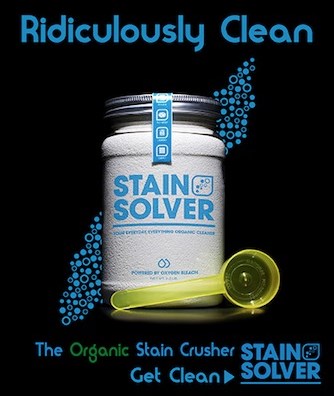
Stain Solver is MADE in the USA with USA ingredients that are food-grade quality. CLICK THE IMAGE to order some NOW.
You can STOP the black spots by just doing a periodic cleaning. The first step is to get the decking clean. I had great success at my own home using Stain Solver.
Stain Solver is a certified organic oxygen bleach you mix with hot tap water. Stir it until it dissolves, add the solution to a garden hand-pump sprayer and saturate the deck on an overcast cooler day.
IMPORTANT TIP: Let the solution work for 15-30 minutes. The longer you let it work, the less you, or a worker, has to scrub.
Some people let the solution work for two or three hours. This requires that you keep the decking WET with the solution with periodic re-spraying. Never allow the solution to evaporate.
Periodic Cleaning HELPS
This is the part you're not going to like. It goes back to the first part of my answer.
You need to maintain the cleanliness of the deck. This means you need to take away one of the three parts of the mold triangle.
You can't take away the spores because they land there all day long. You can't take away water.
Take away the food. The moment you see one black spot reappear, you get out the Stain Solver and spray down the deck. This time you can add a little liquid Dawn dish soap and lightly scrub the decking a few minutes after spraying the solution.
You don't need to wait the 15 or 30 minutes. You'll not have to work hard scrubbing.
Black Spot Prevention
You can also stop the black spots by spraying the decking with a copper sulfate solution. Copper is a natural biocide.
Copper plating was used by the owners of the historic clipper ships like the Cutty Sark and Thermopylae to make them more money. It was attached to the hulls of the ships and it prevented the growth of barnacles and other organic animals from growing on the wood hulls.
This organic growth slowed the ships by creating more drag and reduced the profits of the owners. This same copper is also on the USS Constitution.
Copper Sulfate Solution
I'd purchase some copper sulfate crystals and dissolve it in hot water.
The strongest solution you can make is achieved by mixing about 1/2-pound of copper sulfate crystals in a quart of hot water.
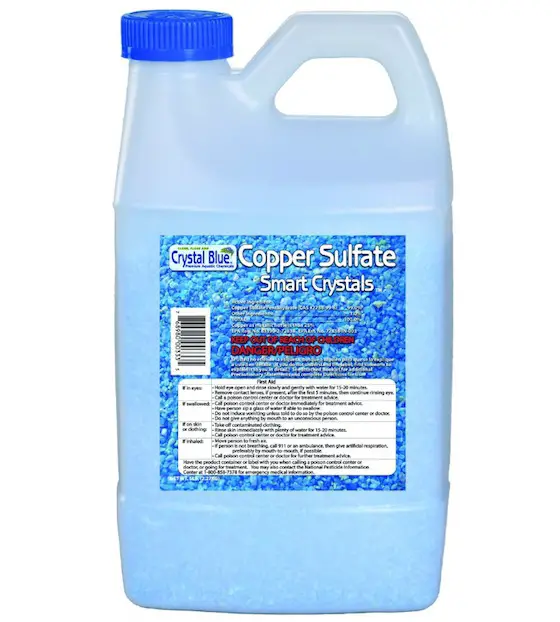
This is exactly what you need to keep algae, mildew and mold from decking and patios. CLICK THE IMAGE NOW TO BUY IT.
Put the solution in a hand-pump garden sprayer and apply it to clean decking.
Apply it as a fine mist on the decking on a hot deck so the solution evaporates as fast as possible. You don't want excess solution to get into the water.
The copper will soak into the wood fibers of the Trex and naturally create a barrier to the growth of the mildew and mold.
I can't tell you how often you'll have to apply it, but it could be four or five times a season. The sun's ultraviolet (UV) rays will break down the copper and expose the wood again to the mildew and mold.
I know one thing, it will only take a few minutes to do this each time versus cleaning the decking!
CLICK HERE to get FREE & FAST BIDS from local deck cleaners who can help you.
Column Black Spots on Trex Decking
